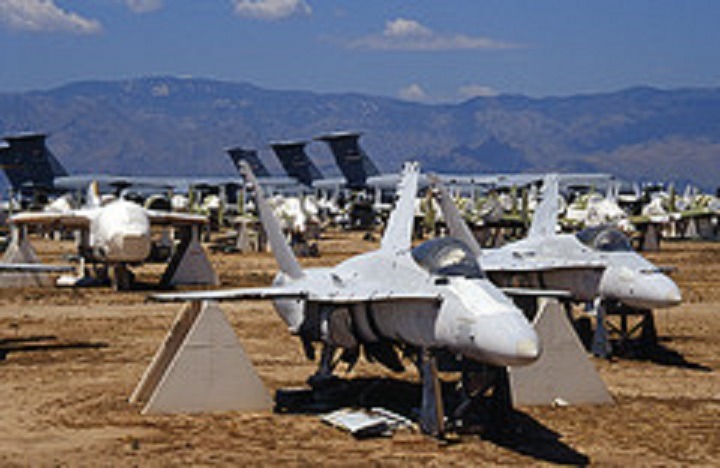The F-18 was a 1970′s design, production starting in 1978, and it’s modified successor, the F/A-18 is still in slow production. This frame provides the Navy’s ENTIRE force for air-superiority, strike, SOME refueling, and ENTIRE airborne electronic warfare abilities.
THIRTY EIGHT YEARS OLD DESIGN AND PRODUCTION.
FIRST LINE RESPONSIBILITIES.

Commercially provided aircraft acting as the enemy during training with U.S. military aircraft is helping ease the strain on Navy F/A-18 strike fighters that typically would fly in that role, said the chief executive officer (CEO) of a company that provides adversary flight services.
Airborne Tactical Advantage Co. (ATAC), based in Newport News, Va., flies a fleet of company-owned or leased tactical jets to simulate dissimilar enemy aircraft in aerial combat exercises with pilots of the Navy, Marine Corps and Air Force. The company was acquired in early July by Textron Inc.’s new Textron Airborne Solutions company.
Jeff Parker, CEO of ATAC, said that the adversary services provided by its jets provide the training needed by the Navy’s fighters that would otherwise be flown by the Navy’s fighters themselves. With the increasing consumption of fatigue life of the F/A-18s during the wars of the past two decades and the loss of valuable mission training by otherwise providing the services themselves, the Navy is able to reduce both problems through the use of contract services like those provided by ATAC.
The Navy’s use of its own aircraft “is something the Navy has already declared [it] must get away from, because they’re burning up their aircraft at a prodigious rate that they can’t keep up with,” Parker said.
ATAC, a start-up in 1996, operates a fleet of 26 jets, including six supersonic Israeli Aircraft Industries F-21A Kfirs, 16 subsonic, mid-performance ex-Swiss Air Force Hawker Hunters, and four Czech-built L-39 Albatros trainers. The aircraft, flown by 30 highly experienced former Navy, Marine Corps and Air Force fighter pilots—including graduates of the famous Topgun Fighter Weapons School — operate from Newport News; Naval Air Station Pt. Mugu, Calif.; NAS Fallon, Nev.; Marine Corps Air Station Kaneohe Bay, Hawaii; and Naval Air Facility Atsugi, Japan.
Parker said the company is able to offer affordable services by operating a lean fleet of aircraft that meets the training needs and is not burdened with costly high-end jets. The company’s 60 maintenance personnel also take care of the fleet in a manner less costly that a military squadron.
The ATAC fleet also provides electronic warfare threat simulation for carrier strike groups and their carrier air wings during their work-ups for deployment. Parker also said the company provides some ground attack training for Joint Terminal Attack Controllers, including Navy SEALs.
No comments:
Post a Comment